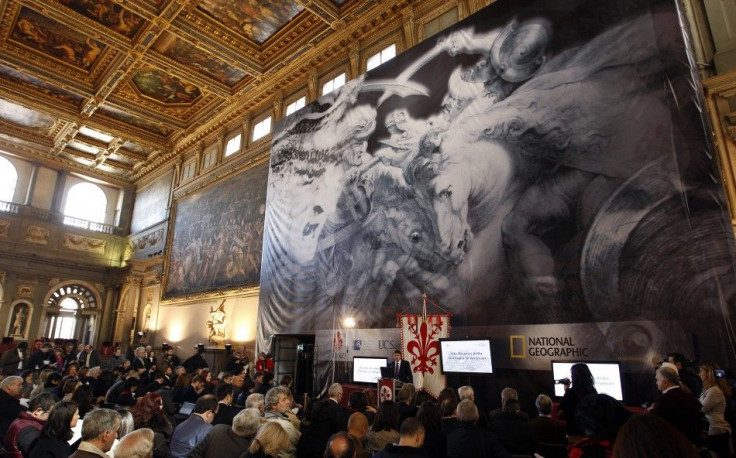Da Vinci's Lost Painting, the 'Battle of Anghiari,' Possibly Discovered In Florence

Researchers believe they may have discovered Leonardo da Vinci's lost masterpiece, the Battle of Anghiari, behind a 5-inch-thick frescoed wall in Palazzo Vechio, Florence.
The hunt for the mural has captivated art historians for centuries. Many came to the conclusion that it was lost, but recent years saw an increase in the search. When researchers concluded it might be behind the frescoed wall of Giorgio Vasari's The Battle of Marcian in Palazzo Vecchio's city hall, scientists drilled tiny holes through the painting and uncovered remnants of black pigments used in the Mona Lisa, reported BBC.
These data are very encouraging, said the project's leader Maurizio Seracini, according to BBC.
However, the historians and researchers said that the tests were not conclusive and needed further chemical analysis.
Although we are still in the preliminary stages of the research and there is still a lot of work to be done to solve this mystery, the evidence does suggest that we are searching in the right place, said Seracini at a press conference.
The tiny probes also discovered red lacquer and brown pigments behind the wall. However, it is possible the paint could be from da Vinci's contemporaries in Florence, reported The Associated Press.
It is widely believed that da Vinci started painting his fresco in 1504 in the Hall of Five Hundred in Palazzo Vecchio's city hall. Critics, at the time, were hailing the project as a masterpiece, which depicted a decisive battle between Milan and the Italian Lauge, led by the Republic of Florence. However, he abandoned the project due to problems with oil painting techniques.
The room was eventually renovated and Vasari began painting his own fresco, the one that is visible today, in 1563. Seranci said that he believes Vasari never intended to harm da Vinci's work, so he bricked it up and began painting on a new wall.
He began pursuing this theory after finding a soldier on Vasari's painting, bearing a flag with the words Cerca Trova or, in English Seek and You Shall Find.
We've waited a long time for this, said Terry Garcia, an executive president of National Geographic, which sponsored the project and is documenting the findings, according to Telegraph. This team has unlocked a mystery that has been with us for 500 years. It is important not just to Italy but to the world.
However, not all art historians and researchers supported Seracini's investigation.
What do they mean by saying the findings are compatible with Leonardo?, said Tomaso Montanari, an art historian, according to BBC. Any painting from the Renaissance would be. Anything from that era could be painted on that wall.
Seraci said it is possible to remove the Vasari fresco, extract the da Vinci, if it is in fact there, and then replace the Vasari without damaging it. However, it is up to Italian authorities to grant permission to Seraci and his team.
© Copyright IBTimes 2024. All rights reserved.





















